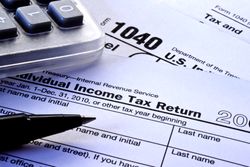What Documents Do You Need to Gather Before Filing Taxes?

While everyone has their own favorite time of the year, there are probably few who would pick tax season. However, with the help of an experienced CPA, the process can go a lot more smoothly, but only if they have all the information from you they need. The tax planning guide below lists the documents you should locate and bring with you to the meeting.
Income Statements
 Tax planning starts by having a set location to keep all of your paperwork. By the end of January, you should have your income statements, either in the form of W-2s or 1099s. Depending on your financial situation, you may also receive documents that track investment or rental property income, miscellaneous earnings like lottery winnings, and money from unemployment or Social Security. Your CPA will need all of these to ensure an accurate and thorough return.
Tax planning starts by having a set location to keep all of your paperwork. By the end of January, you should have your income statements, either in the form of W-2s or 1099s. Depending on your financial situation, you may also receive documents that track investment or rental property income, miscellaneous earnings like lottery winnings, and money from unemployment or Social Security. Your CPA will need all of these to ensure an accurate and thorough return.
Expenditure Records
Tracking applicable expenses ensure you receive the largest refund—or owe the least amount of money—possible. For tax planning purposes, documents worth saving include receipts for deductible expenses, records of charitable contributions, and student loan, mortgage, and retirement account statements.
Even those who plan on taking the standard deduction should save all relevant records and receipts to ensure doing so is actually in their best interest. Tax law can change from year to year, and there is no way to predict how the numbers will work out until your CPA takes a look.
Once you have gathered all of the above, turn to Young Hoy & Burnett CPA for comprehensive guidance during tax time. Located in Texarkana, TX, this accounting firm has been providing tax services for individuals and businesses throughout the Four States area for more than four decades. To reach out and learn more about their tax planning services, fill out the form on their website or call (903) 794-2211.
About the Business
Have a question? Ask the experts!
Send your question

